Epidemiology
Athletic / high impact exercises
Aetiology
First described in ballet dancers (Burrows 1956)
- tension side of bone / lateral side
- progression to complete fracture has been well documented in athletes
Signs
Point tenderness
- lateral aspect of tibia
Over time develop bony lump
X- ray
Often narrow medullary canal & thickened periosteum
- proximal third in adolescents
- runners typically at junction of middle and distal 1/3
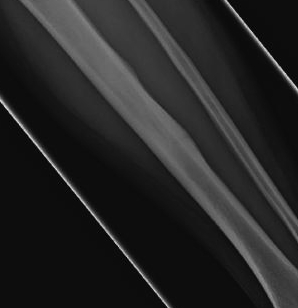

Dreaded black line / fracture
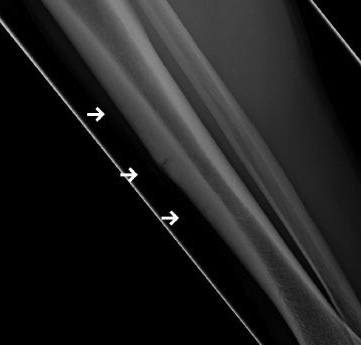
Posteromedial Tibial Stress Fracture
On compression side
Better prognosis for healing

Biopsies
Granulation tissue, fibrous vascular periosteum, underlying new bone formation
DDx
Osteoid Osteoma
Ewings
Osteogenesis Imperfecta
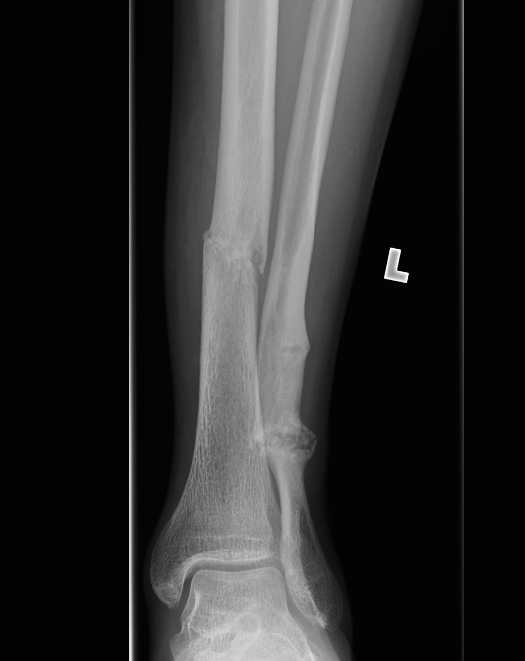



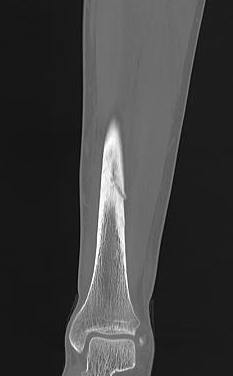
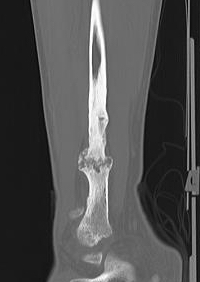
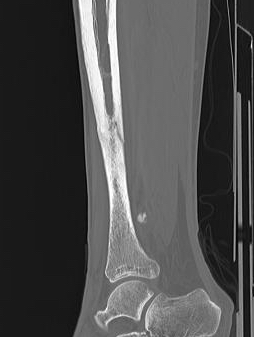
Issues
Can take a long time to heal
- up to 1 year
Can fracture
- which can go on to non union
Management
Non operative Management
Options
PTB / Rest
Ultrasound
ECSW
Operative Management
Options
Bone graft
Percutaneous drilling
IMN
Anterior Plating
IM Nail
Chang et al 1996 Am J Sports Med
- five cases of chronic tibial stress fractures
- army recruits with minimum 1 year non-op treatment
- reamed IM nail
- 3 proximally locked, 2 percutaneous corticotomies
- 1 lost to follow up
- 2 excellent results (unlimited pain free running)
- 3 good results (occasional pain with vigorous exercise)
- conclusions: safe, effective / no need to lock proximally / corticotomy not needed
Varner et al Am J Sports Med 2005
- 7 athletes treated with IM reamed nail
- united by 3 months
- return to sport by 4 months
- one patient developed bursitis at nail insertion site which settled with HCLA
- one patient developed a distal tibial traumatic fracture which healed non operatively
Anterior Plating
Borens et al J Orthop Trauma 2006
- 4 world class female athletes
- treated with anterior tension band plate
- no complications
- all healed and return to full sports at 10 weeks
